In 1938, in a small town in Upper Austria, one of the many Nazi concentration camps was constructed. It was known as the Mauthausen concentration camp. It existed from 1938 to 1945. The camp was run and guarded by the SS. The people who were imprisoned here came from many countries in Europe: Poland, Russia, France, Italy, Germany, Austria and others. They were political opponents, belonged to marginalised groups (e.g. ‘criminals’, ‘asocials’) or were persecuted for anti-Semitic and racist reasons (e.g. Jews). Most of the prisoners were men, but there were also women and children.
In the Mauthausen quarry, the prisoners carried out hard forced labour. In the more than 40 subcamps (Gusen, Steyr, Linz, Ebensee, Vienna...), they were deployed in the arms industry. People lived in overcrowded accommodation. They were not given enough food and clothing, and they starved and died of diseases. SS men beat many prisoners to death, shot them or murdered them in the gas chamber at Mauthausen. In total, almost 200,000 people were imprisoned at Mauthausen and its subcamps. Half of them lost their lives.
The Mauthausen concentration camp was on a hill and could be seen for miles around. Many people were involved with the camp: they worked there, brought deliveries or knew SS men. Almost everyone knew about the death camp. Often, the SS men committed the crimes in full view of the population. On 5 May 1945, the Mauthausen concentration camp was liberated by US troops.
Here, you will read the story of a person who was connected with the Mauthausen concentration camp.
Manuel García Barrado
Text: Teres Stockinger – Illustration: Alena Ertl
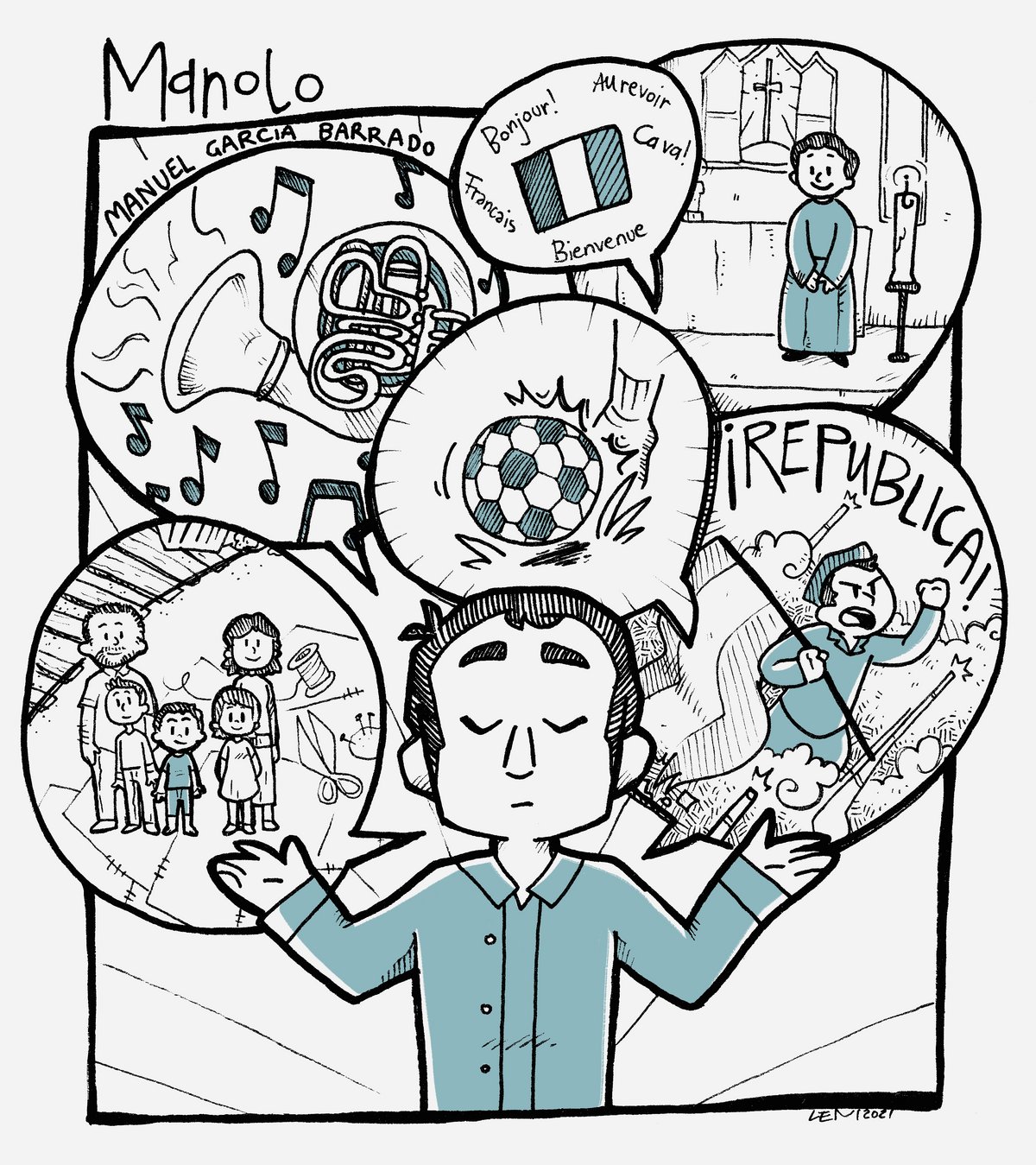
Manuel García Barrado, known as Manolo, is born in 1918 and grows up in Madrid.
His father is a railroad worker, and his mother a seamstress. Manuel is the youngest of three siblings.
He is offered training to become a Catholic priest, but instead he attends a construction school. In his spare time, he plays football and even trains in a Real Madrid youth team. He also loves music and plays the horn.
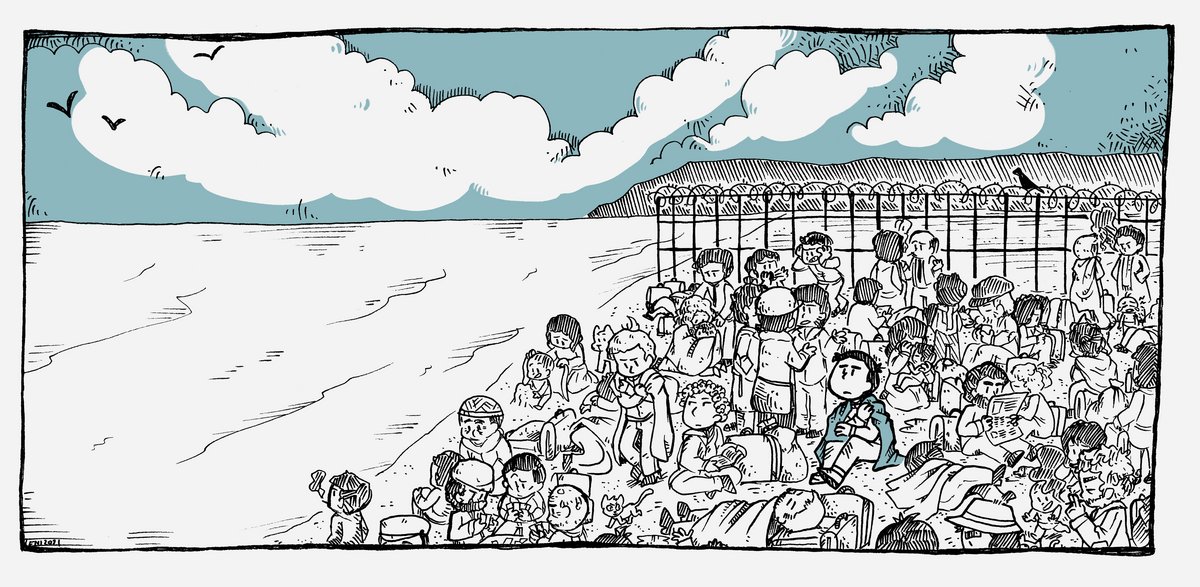
When Manuel García is 18 years old, there is a military coup in Spain. General Franco wants to abolish the democratic republic and establish a dictatorship. A civil war breaks out and lasts three years. Manuel García fights as a volunteer with the Republican troops against General Franco.
General Franco and his supporters win the civil war in 1939. They are brutal in their reprisals against the defeated Republicans. Large numbers of Republicans, including Manuel García, flee to France, where they end up in refugee camps.
Many Spanish refugees are put to work in France. García enlists in the French Foreign Legion, a military unit for foreigners. He fights with the Foreign Legion against the German Wehrmacht, which attacks France during the Second World War. After the defeat, Manuel García goes to Germany as a prisoner of war.
In March 1941, he is taken to the Mauthausen concentration camp, along with 7,200 other Spanish people. When he is admitted to the camp, he is asked what his job is. García cannot speak German. So he draws something in the air with his finger: a house. The clerk enters ‘architect’ into the records.
During his first weeks in Mauthausen, García has to do hard forced labour in the quarry. Every day he sees fellow Spaniards die, many of them murdered by the SS guards. He fears he also won’t survive much longer.
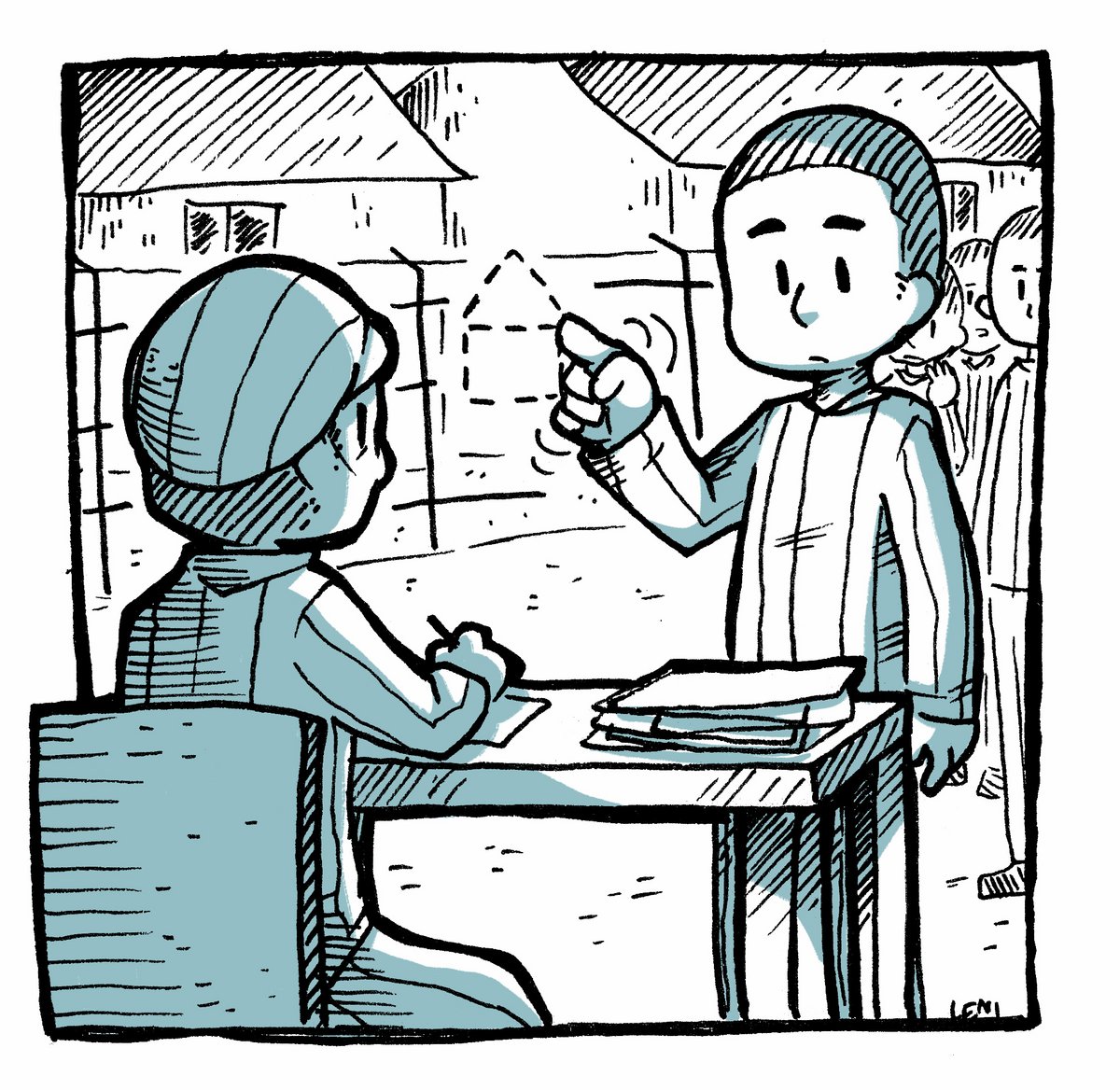
One day García is taken out of his labour detachment and has to wait at the camp gate. He trembles with fear. An SS man comes up to him and says: ‘You. Tomorrow. Construction office.’
The next morning, he begins working in the construction office. This is where the plans for the barracks, walls and towers of the camp are drawn up. As a test, he has to draw a plan. He is nervous – will he pass? He makes a big effort, and the SS man is satisfied. So he stays in the construction office.
This is a fortunate turn of events for García because the work is much easier. Since there is often something to be measured for the plans, he can move freely around the camp. Sometimes he goes to the kitchen barracks and is sneaked food by the Spanish prisoners who work there. This helps him to survive.
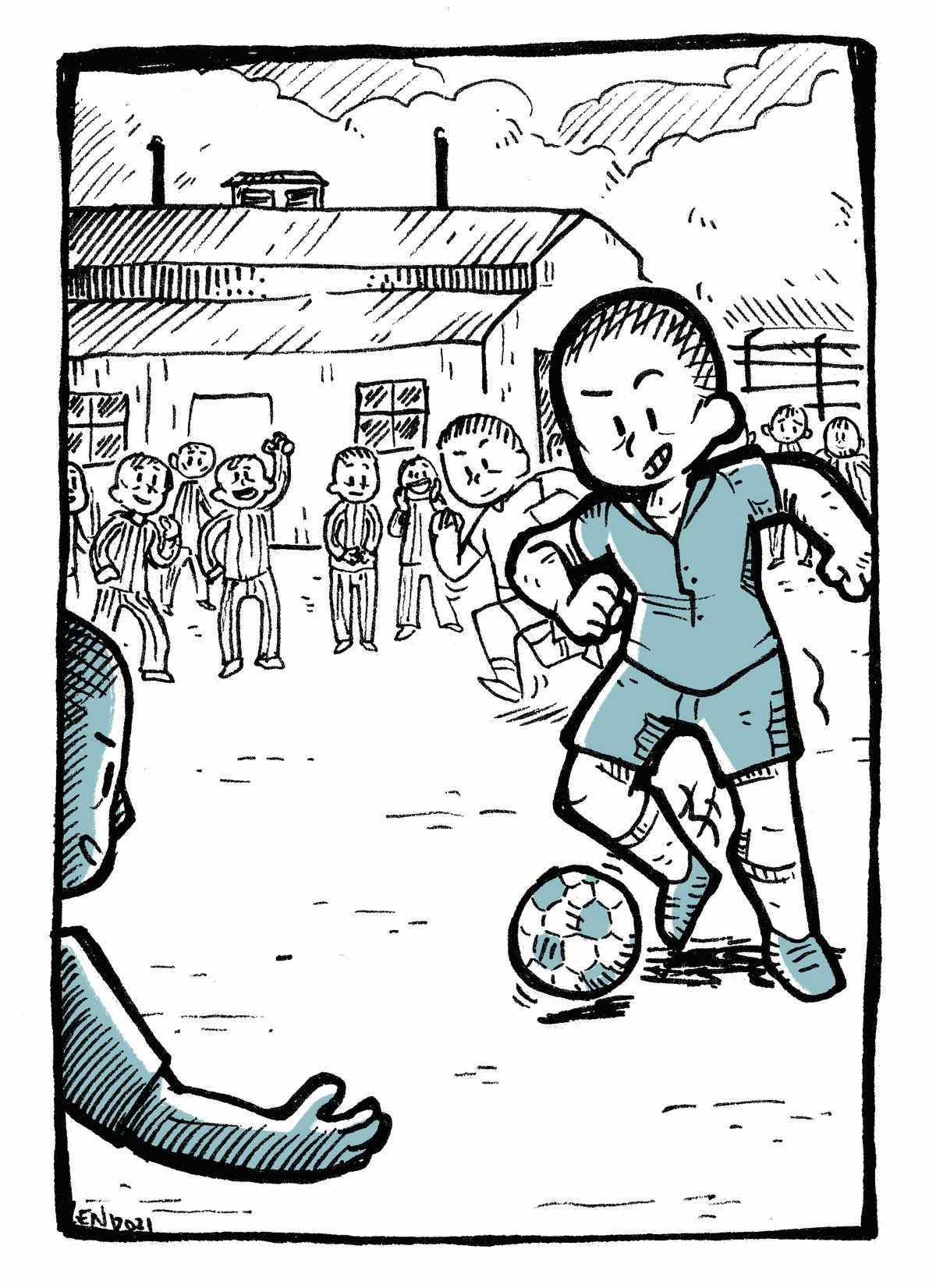
García is later transferred to the Gusen concentration camp, where he also works in the construction office. A Spanish football team is being put together at Gusen. On Sundays, the prisoners from the different countries play against each other. Of course, this only includes prisoners in good positions, who, like García, do easier work and are better fed. Manuel García becomes captain of the Spanish prisoner team.
Towards the end of the war, he is no longer needed in the construction office and is expected to do hard physical labour again. But once again he has a stroke of luck. Many Spanish prisoners are active in an underground organisation and help each other. They manage to get García an easier job in the Jourhaus at Gusen.
After the liberation of the Mauthausen concentration camp in May 1945, the Spanish prisoners cannot return to their homeland.
The dictator Franco is still in power in Spain, and they would most likely be imprisoned or even murdered if they went back. Many choose to go to France, where they receive asylum. García and some of the others decide to stay in Mauthausen and wait until the end of Franco’s dictatorship.
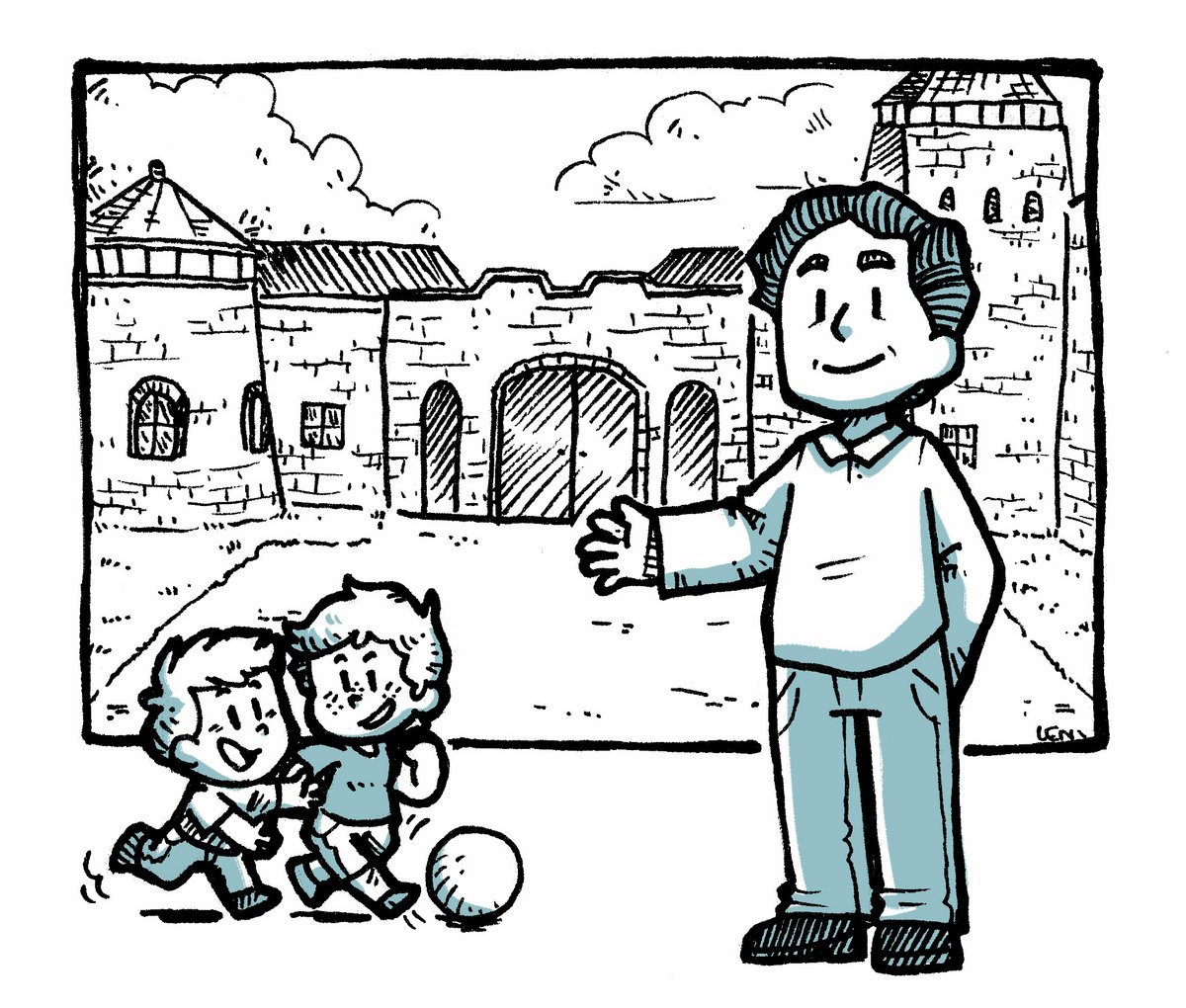
He now speaks good German and works for a company as a draughtsman. Soon he marries and has a son and a daughter with his wife Anna. García also plays football again, for ASKÖ Mauthausen.
In 1963, he starts a new job. The concentration camp has since become a memorial, and García becomes its caretaker. Now he lives with his family in accommodation provided by the Memorial which is located in the former SS Administration Building. He looks after the Memorial and gives tours.
This is especially important for the Spanish visitors because they learn that Spanish people were imprisoned at Mauthausen. This is not talked about in Spain. García is caretaker of the Memorial for 20 years. The Spanish survivors of the Mauthausen concentration camp build a monument at the Memorial. It commemorates the thousands of Spaniards who were murdered in Mauthausen and Gusen.
After the death of the dictator Franco in 1975, García is able to travel to Spain again, and he sees his mother for the first time in over 30 years. He visits her more often, but he doesn’t want to return for good. He now has his family in Austria. He receives commendations from the Spanish and Austrian governments.
Manuel García Barrado dies in Mauthausen in 2006.
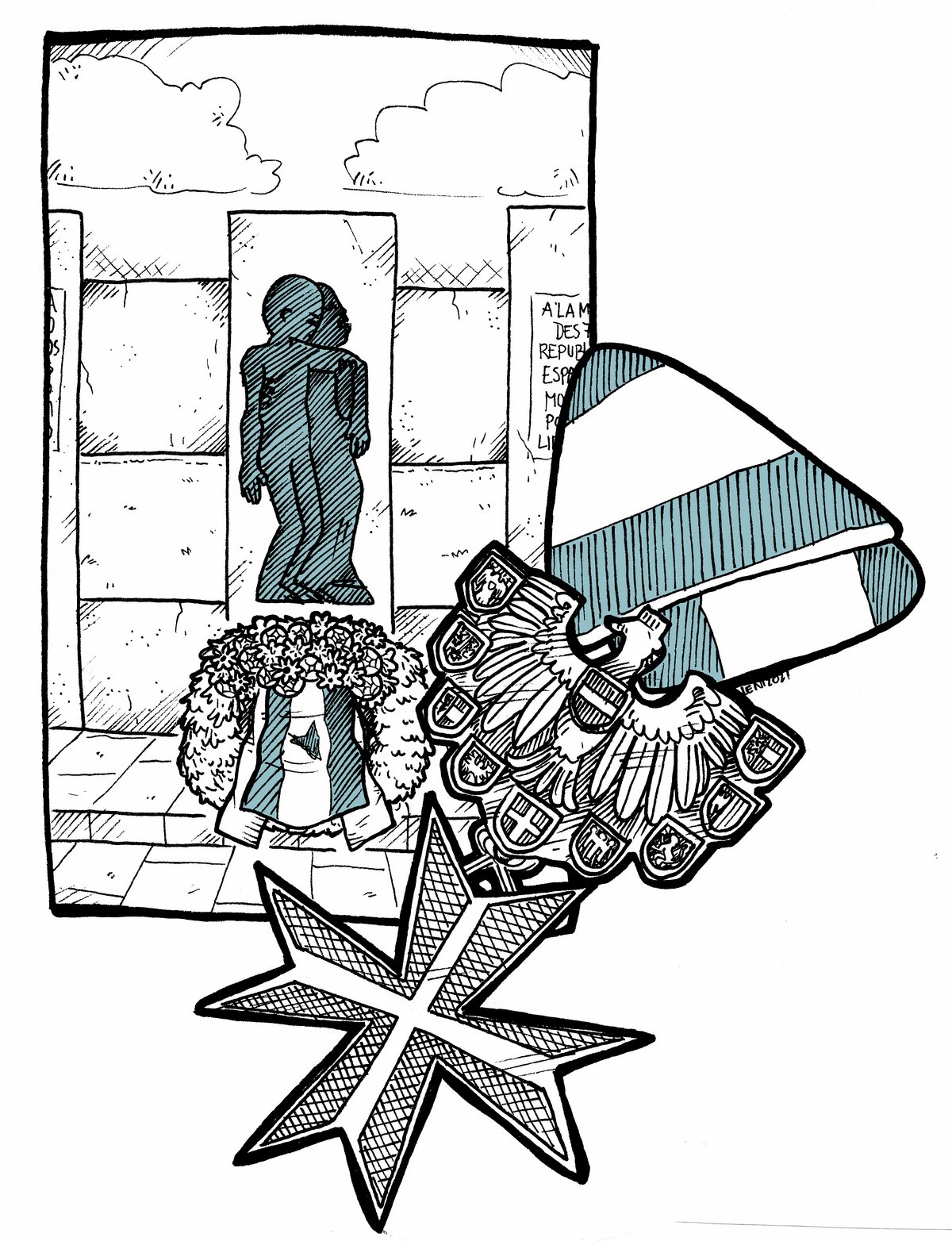
- 1918 Manuel García is born
- 11 November, end of the First World War
- 1933 30 January, Adolf Hitler becomes Reich Chancellor in Germany
- 1936 Military coup in Spain, start of the Spanish Civil War
- García fights as a volunteer with the Republican troops against General Franco
- 1938 12 March, ‘Anschluss’ (‘Annexation’) of Austria to Nazi Germany
- 8 August, construction starts on the Mauthausen concentration camp
- 1939 General Franco wins the civil war; Spain becomes a dictatorship
- García escapes to France
- 1 September, start of the Second World War
- December, Construction begins on the Gusen concentration camp
- He is a prisoner of war in Germany
- 1941 He is transferred to Mauthausen
- 1945 5 May, Mauthausen concentration camp is liberated by the US Army
- 8 May, Nazi Germany surrenders; end of the Second World War in Europe
- nach der NS-Zeit García remains in Mauthausen, working as a construction draughtsman. He gets married and has two children
- 1963 He works as a caretaker at the Mauthausen Memorial
- 1975 The Spanish dictator Franco dies
- García visits Spain for the first time since his exile
- 2006 Manuel García dies in Mauthausen
Further reflection in groups...
In January 1940, after their defeat in the Spanish Civil War, many fighters fled with their families to France. In one drawing, we can see Manuel García in a refugee camp. Describe what you see in the picture.
The Spanish prisoners in the concentration camp stick together and help each other. Find examples of this in Manuel García’s biography.
After liberation, Manuel García wants to return to his family, but the dictator Franco still holds power in Spain. Imagine Manuel is writing to his mother to explain why he’s not coming home (one or two sentences): ‘Dear Mother, ...’
The Spanish survivors of the Mauthausen concentration camp build a monument at the Memorial. Look for the monument during your visit to the Memorial. There are figures depicted on the monument. What do you feel this image expresses?